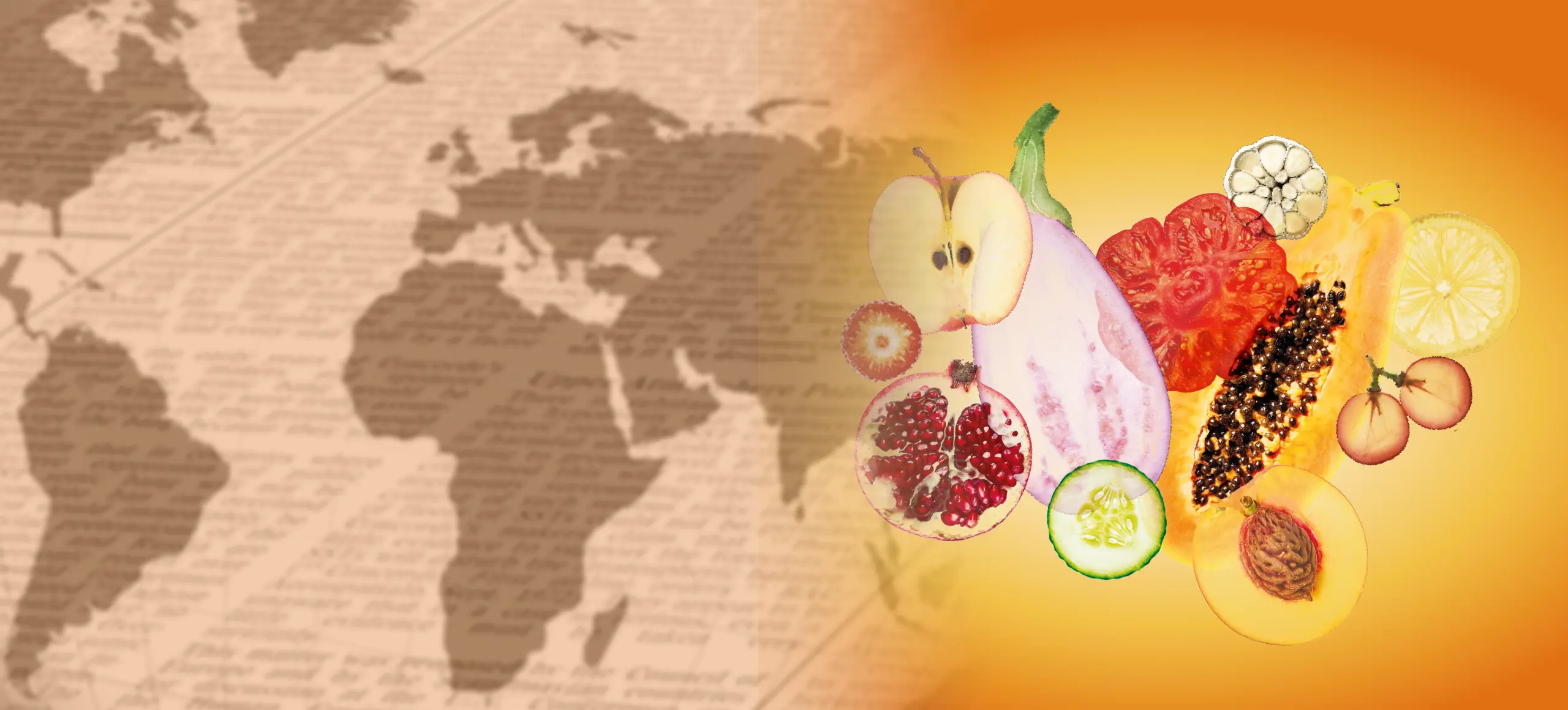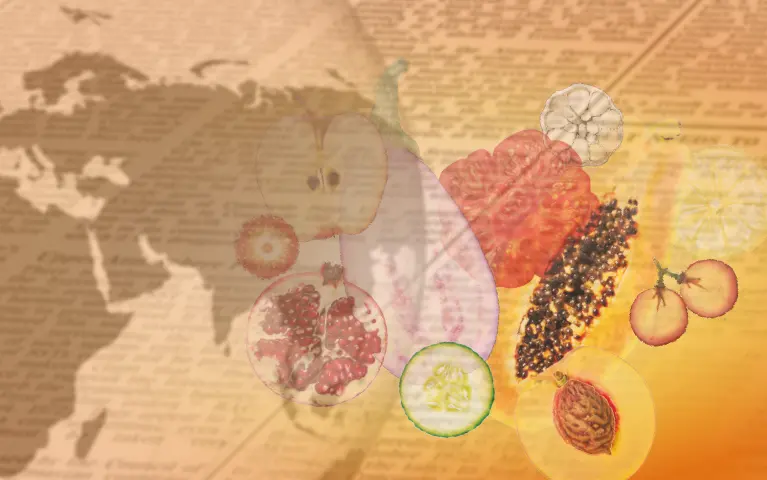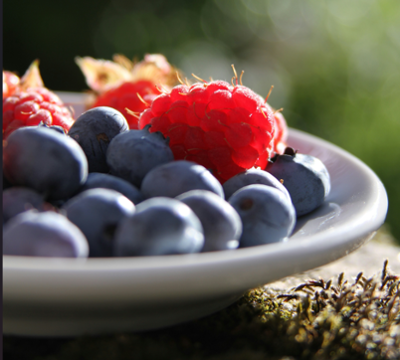

Superfoods: what they are and how they are evolving on the market
Fruits such as blueberries, açai and, above all, avocado, seeds such as chia or quinoa, and seaweed are increasingly present in our shopping basket because of their health-promoting properties. Our growing concern for health and personal wellbeing will propel these products even faster in the coming years, mainly as raw materials in other processed products, with the market expected to exceed $339.6 billion by 2032. There are also myths and false dogmas behind superfoods regarding their healing power, so experts stress that taking them does not compensate for a bad diet, that it must always be varied and balanced and that, in any case, there are many fruits and vegetables on our doorstep with exceptional components.
They have been around forever. In fact, if we had to talk about the first superfood in history, we would undoubtedly have to go back to the beginning of humanity and focus on mother's milk. Ancient cereals such as rice or teff, nuts, donkey's milk... and, of course, honey, are others to which, over the centuries, fabulous, even magical, qualities for human health have also been attributed. However, it was not until the mid-20th century that the American United Fruit Company created the concept of a ‘superfood’ as such, to promote the consumption of its bananas. And from then on, it was marketing that really worked its magic, launching the term at stratospheric speed - even more so since the turn of the millennium - until it entered our subconscious, engraving it in our minds, making it colloquial and, of course, setting it up as the banner of the new healthy culture.
Thus, goji berries, spelt, maca, Himalayan pink salt, turmeric, quinoa, spirulina, kefir... have become the stars of the new recipe book of superfoods, driven by a stimulating and attractive nomenclature, and because they seem to taste, by their mere pronunciation, of health.
What are superfoods and their importance
The truth is that the term superfood has not been defined either scientifically or legally. However, we have already seen that the English-speaking world has been talking about superfoods for decades and that our RAE, in its work of continuous adaptation to the needs of Spanish speakers, has also included this word in the Dictionary of the Spanish Language, which is defined as: ‘food that is supposed to have beneficial properties for health in addition to its nutritional value’. Based on this general definition, we can add that this value means containing, in quantity and quality, essential nutrients such as vitamins, minerals, fibre and antioxidants, so that these natural foods considered superfoods can help the body, as pointed out by the World Health Organisation (WHO), to prevent illnesses and stay healthier.
More specifically, the international body specifies on their importance, incorporated into a balanced diet, these foods can promote cardiovascular health, weight loss, improve energy levels and even reduce the effects of ageing.
Top 10 superfoods to be produced in 2024
According to its own list, of the hundreds of fruits, nuts, seeds, legumes, vegetables, algae, dairy products, herbs and bee products produced, in 2024, nuts, chia, quinoa, blueberries, dark chocolate, salmon, avocado, spinach, lentils and natural yoghurt topped the top ten of those defined as ‘happiness superfoods’.
These ten, like many others, clinging to this attribution of positive effects and, in many cases, encouraged by powerful and brilliant advertising campaigns, have set out to conquer us with this “super” in their letter of introduction, promising us iron health and bringing us a little closer to the longed-for elixir of eternal youth. It seems that they are succeeding and, moreover, given our growing interest in health and personal wellbeing, they are going to be increasingly present in our shopping basket.
Global market size
This is according to data compiled by market research report publisher Fortune Business Insights, which put the size of the superfoods market above the $188 billion threshold globally in 2024, with its value expected to rise to no less than $339.6 billion by 2032. According to a prediction by the German online statistics portal Statista, Europe will play a particularly important role in this upward trend, thanks above all to the United Kingdom and companies such as Supernutrients Ltd and Creative Nature Ltd, which are managing to carve out a niche for themselves in this sector, which until now has been dominated by American companies.
The superfruits that generate the most revenue
As far as the real players in this market are concerned, the focus is on superfruits, one of the already star categories, given their richness in antioxidants and nutrients that are linked to preventing or delaying cell damage, but which is also predicted to gain significant momentum in the global market given their growing use in a variety of end-use applications such as food and energy drinks, nutraceuticals and dietary supplements, cosmetics and personal care.
In this field, the growing prominence of products made from natural and organic ingredients is found to have a significant influence on sales of superfruits in the global market, with bananas generating the most revenue - $142 billion by 2023 - although it is the apple segment that Fortune Business Insights forecasts to have the best growth prospects in the coming years thanks to the high fibre and low sugar levels it offers compared to other fruits.
However, one of the most popular fruits at the moment is the blueberry, which, according to the latest reference data from the Food and Agriculture Organisation of the United Nations (FAO), has gone from a world production of 1,040,172 tonnes in 2020 to 1,220,665 tonnes in 2023.
Açai, considered the Amazonian Viagra, seeks to overshadow it, although the one that really stands out and has taken the lead over both little blue berries, despite its excellent attractiveness both in composition and flavour, is the avocado, which is gaining popularity by leaps and bounds with its particular grace in salads and desserts, especially among the millennial generation. Just take a look at the data provided by Faostat, the world's most comprehensive statistical database on food, agriculture, fisheries, forestry, natural resource management and nutrition provided by the FAO: this subtropical fruit with its special roots in Central America exceeded ten million tonnes of global production in 2023 and not only has a high market value - albeit behind bananas, apples and pears - but is expected to continue to grow significantly in the coming years.
Other segments
The exotic origin that surrounds this fruit with its soft and silky pulp is also that which accompanies chia, the star of the super seeds, whose market size was estimated, according to data from Mordor Intelligence, at 1.51 billion dollars in 2024 and is expected to reach 2.93 billion dollars in 2029, driven by its gluten-free properties and its high protein content. Alongside it, quinoa, an ancient pseudo-ceral from the Andean highlands, has also emerged strongly in this segment, both for its nutritional richness and versatility in the kitchen, reaching $1.30 billion in market value in 2024, with a forecast to rise to $2.12 billion in 2029.
The exotic origin that surrounds this fruit with its soft and silky pulp is also that which accompanies chia, the star of the super seeds, whose market size was estimated, according to data from Mordor Intelligence, at 1.51 billion dollars in 2024 and is expected to reach 2.93 billion dollars in 2029, driven by its gluten-free properties and its high protein content. Alongside it, quinoa, an ancient pseudo-ceral from the Andean highlands, has also emerged strongly in this segment, both for its nutritional richness and versatility in the kitchen, reaching $1.30 billion in market value in 2024, with a forecast to rise to $2.12 billion in 2029.
Buckwheat, another pseudocereal grown mainly in China and Russia, and triticale, a hybrid between wheat and rye, are other crops that are flourishing in the heat of the superfood craze, as agricultural engineer and professor Yolanda Delgado Delgado points out. She has been involved in R&D in the food industry for years, and says that the current trend is, above all, to use products of this type as raw materials in other processed products, given their properties and functionalities. This is also the case, she says, with oats, which are widely used in the labelling of biscuits, for example, despite the fact that their contribution is negligible if we do not eat a huge amount of this other end product - which, on the other hand, is not as healthy as a whole.
What the experts say
According to this self-confessed nutrition enthusiast, foods rich in antioxidants are also on the rise, such as Japanese matcha green tea or açai itself - also as additives to other processed products - and fermented foods such as kombucha or kefir, which, ‘without belittling them, do nothing more than replace what we have always had and which have the same functionalities’. Yolanda Delgado stresses that this last aspect is repeated with kale, one of the super-vegetables that has become more popular today, perhaps because of the exoticism of its name, but which is still a kale that shares numerous properties with kale, cabbage, cauliflower and broccoli.
This last example comes as a ringing endorsement to underline that the fashion for superfoods - among which seaweed is also gaining prominence, whose global market has more than tripled in the last two decades, from 5,000 million dollars in 2,000 to 17,000 million in 2021, according to the UN - is ‘a little imposed on us at the level of consumption by a clearly economic interest’. ‘The reality is that they are rich in one or more specific components,’ he says, "but they create a need for them, even when we already have a food that offers us the same thing.
And we have them, moreover, adds Marta Colmenares Hospital, also an agricultural engineer, expert in agri-food industries and professor, on our doorstep, without the environmental cost of transporting those other superfoods from Asia, Africa or America and, of course, without the terrible social cost that we often inflict on the distant territories where they are produced, whose soils we deplete and whose population can be left without the basis of their diet and sustenance simply so that we inhabitants of the so-called first world can follow the fashion.
Jara Pérez Jiménez, PhD in Food Science and Technology and senior scientist at the CSIC's Institute of Food Science and Technology and Nutrition, also has a critical view of these products, around which half-truths and even false dogmas have continued to proliferate to the point of feeding the belief that their consumption can prevent and even cure certain illnesses, Jara Pérez Jiménez, PhD in Food Science and Technology and senior scientist at the CSIC's Institute of Food Science and Technology and Nutrition, says that ‘some foods do indeed have a nutritional content that is scientifically proven to be beneficial to health’ and it is therefore appropriate, even advisable, to include them in our diet, but behind many others, whose impact on human health has either not yet been sufficiently researched or is still at the study stage, there is nothing more than ‘pure marketing’.
‘There is a clear interest on the part of the industry to promote new products,’ the scientist emphasises, before recognising that, if this is combined with the majority, and on the other hand, the logical ‘lack of knowledge of the population’ about the nutritional composition of foods, we have the perfect formula for some to become a trend and take the road to success despite not being miraculous.
Spain, says the author of the book What do we know about? Superfoods, follows the trend and tends ‘towards these exotic foods despite their higher cost compared to local ones’, but, beyond fashions, what we must be clear about, according to this expert, is that our diet must be rich and varied ‘in all foods of plant origin, the more in quality, the better, and the more in quantity, the better’. In this sense, Pérez Jiménez, like many nutritionists, insists that no product on its own can be a superfood and that the so-called superfoods do not have an immediate effect on health, nor do they compensate for a bad diet, nor, of course, do they have superpowers in the face of illness.
And if we are talking about variety and balance, what better example than our Mediterranean diet, a dietary model that should become fashionable because, emphasises Yolanda Delgado, ‘it is a superfood in itself’.






